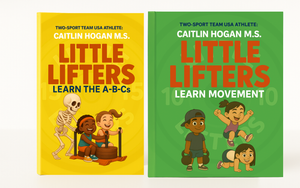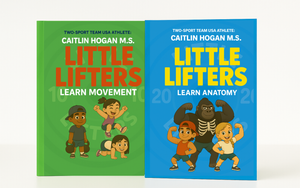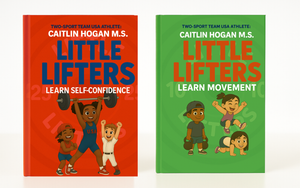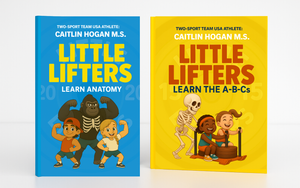🔁 Hinge to Win: Teaching Kids How to Bend with Strength and Control
How your child bends over might seem like a small detail—but it makes a big impact.
Hingeing is the foundation for safe lifting, athletic power, and everyday movement. Teaching kids how to bend at the hips (not the spine) helps prevent injuries, builds posterior strength, and supports good body mechanics for life.
From picking up toys to learning how to deadlift, hingeing is where strong movement begins.
🧠 Why It Matters
Hingeing supports:
-
Posterior chain strength (glutes, hamstrings, back)
-
Hip mobility and flexibility
-
Safe lifting mechanics
-
Coordination and body awareness
It’s essential for sports, school life (think backpacks!), and preventing poor posture habits that start young and stick around.
🧒 Movement by Age Group
▶️ Ages 2–4:
Activity: “Butt to the Wall”
-
Stand a few inches from a wall. Practice pushing hips back until the butt touches the wall—without bending the knees too much.
-
Add a silly sound when they tap the wall!
Activity: “Toy Pick-Up”
-
Place toys on the ground and cue them to bend at the hips like they’re sticking out their butt to grab it. Use “chest tall” and “booty back” language.
Goal: Introduce hip hinge mechanics in a fun, body-aware way.
▶️ Ages 5–7:
Activity: “Hinge & Reach”
-
Stand with feet hip-width apart, slight bend in the knees. Push hips back, reach forward with flat back, then return to standing.
-
Bonus: Pretend they’re picking apples or grabbing treasure from a chest.
Activity: “Mirror Hinge”
-
Face your child and mirror each other’s hinges. Focus on keeping backs flat like a tabletop.
Goal: Build understanding of hip-led movement and reinforce strong posture.
▶️ Ages 8–10:
Activity: “Wall Tap Deadlifts”
-
Hold a light object (stuffed animal, light ball). Hinge and lower the object down, keeping it close to the legs.
-
Tap the floor, then drive through the hips to stand up tall.
Activity: “Slow-Mo Good Mornings”
-
With hands behind the head, practice slow hinge-and-return patterns—focusing on control and spinal alignment.
Goal: Build posterior chain strength, flexibility, and safe lifting patterns.
🔬 Science Spotlight
Hingeing activates the glutes, hamstrings, and spinal stabilizers—key muscles for explosive power, posture, and injury prevention. Learning this movement early improves hip mobility, supports lumbar safety, and teaches kids how to transfer force through the hips instead of the lower back.
This is the foundation for lifting, sprinting, jumping—and moving well for life.
💡 Parent Tip:
Start slow. Demonstrate side-by-side. Turn hingeing into a scavenger hunt or toy clean-up game. The goal is to groove a pattern that feels natural and strong—one rep at a time.




0 comments